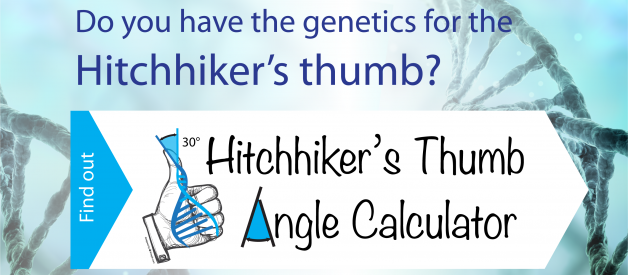The Hitchhiker?s Thumb is a thumb where the distal joint can bend as far backwards as 90 degrees. The Hitchhiker?s Thumb is often referenced as a visual trait of genetic inheritance.
Here we discuss the science behind it and how we developed a serverless webapp that allows people to score the angle of their thumb.
No large scale studies have been done to record the distribution of thumb angles worldwide so the Hitchhiker?s Thumb Angle Calculator may serve as a resource for this.
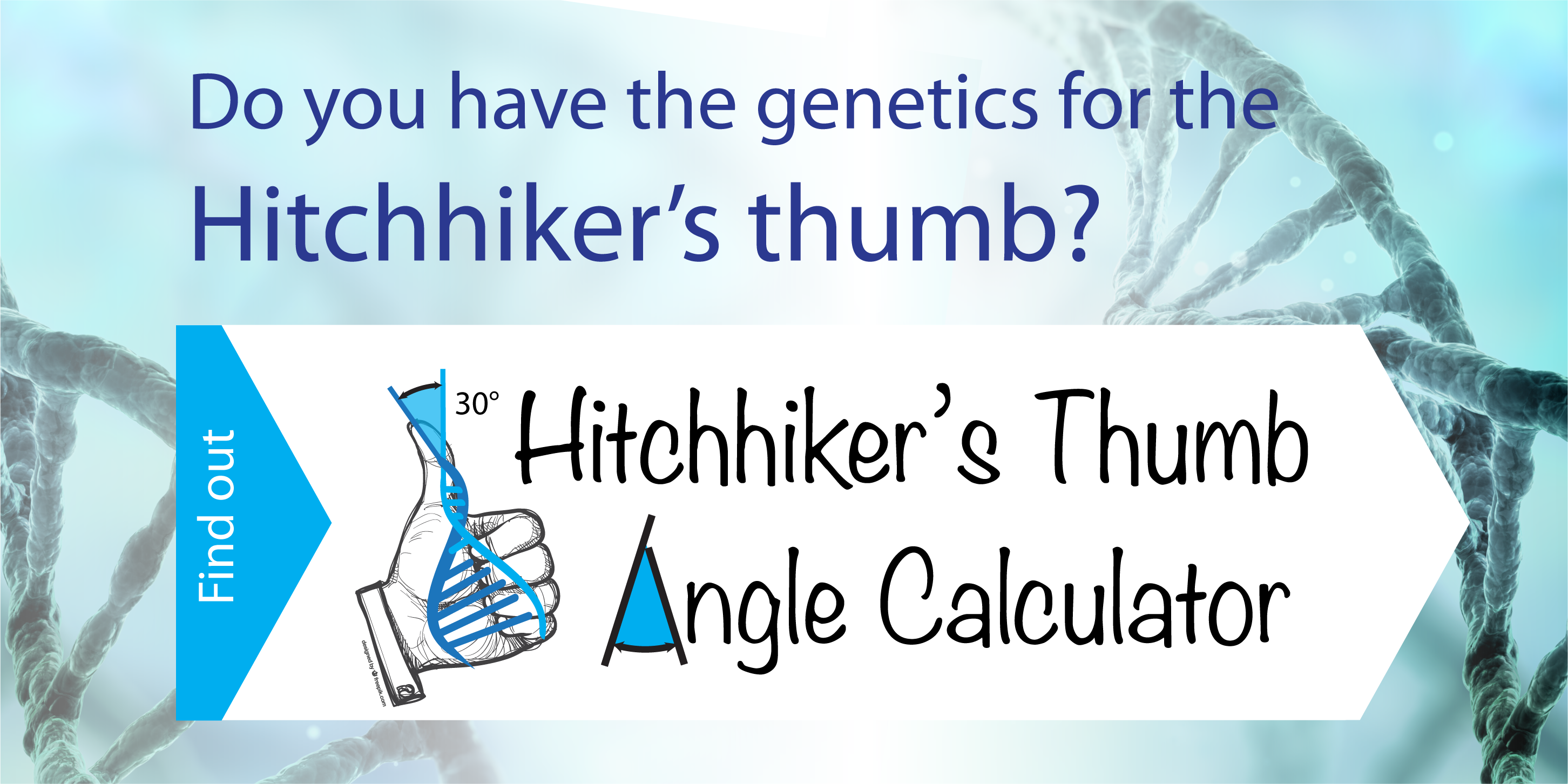
The science of the Hitchhiker?s Thumb
The Online Mendelian Inheritance in Man (OMIM) database references for distal hyperextensibility (Hitchhiker?s Thumb) the 1953 study (Pubmed). Here, Glass and Kistler define a Hitchhiker?s Thumb to be a thumb that bends more than 50 degree. In their study between 24.7% and 35.6% of individuals in the United States have a Hitchhiker?s Thumb.
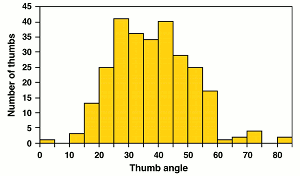 John H. McDonald reproduction of the Glass and Kistler study (1953).
John H. McDonald reproduction of the Glass and Kistler study (1953).
A 1949 (294 individuals, USA) and 2012 (310 individuals, South-South Nigeria) identified a 5% and 32.3% angle respectively. Though the 1949 study was reported from X-ray.
Glass and Kistler concluded the Hitchhiker?s to be a simple Mendelian trait. That is people with the Hitchhiker?s thumb have two copies of the recessive ?hitchhiker?s gene? (H offspring). As we inherit one gene from our parents each, that means both our parents have had this recessive gene themselves, however if they also had one copy of the dominant ?straight thumb gene?, they may only be ?carriers? rather than showing the trait.
 John H. McDonald reproduction of the Glass and Kistler study (1953).
John H. McDonald reproduction of the Glass and Kistler study (1953).
If it was a simile Mendelian trait the S offspring from HxH parents would not be possible because the parents would both have two H genes and cannot pass on the S gene. A 1960 study found 3 out of the 100 participants to not conform to Mendelian.
Conclusion: There is a genetic influence on thumb angle and angles follow a normal distribution. So it is valid to set a threshold at the upper extreme range (e.g. >50%) and label them as Hitchhiker?s thumb with strong inheritance patters towards that.
Automatically detecting thumb angle
We use python3 and scikit image to read and manipulate the images. First we read in the file, resize and convert it to grey.
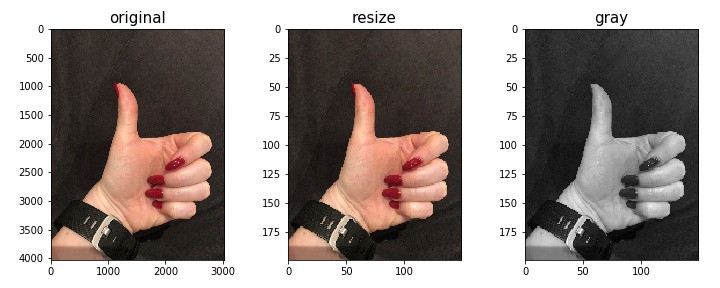
Next we need to find the hand using the watershed approach, which fills an area like water would fill a terrain. To create the terrain, we run an elevation map of the largest contrasts. Then we set the seed for the foreground and background watershed filling method. We define the foreground to start in the middle of the image while the background starts at the top left and right corner.
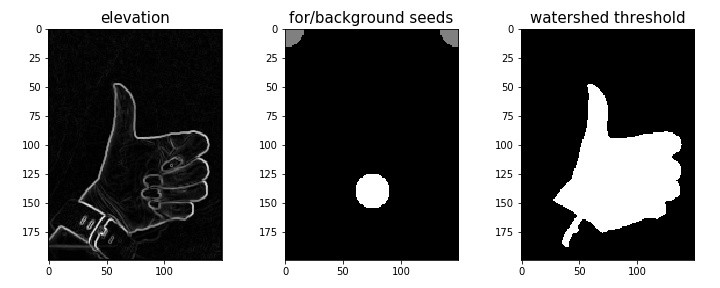
From this we fill any holes using erosion and smoothing the boundaries.
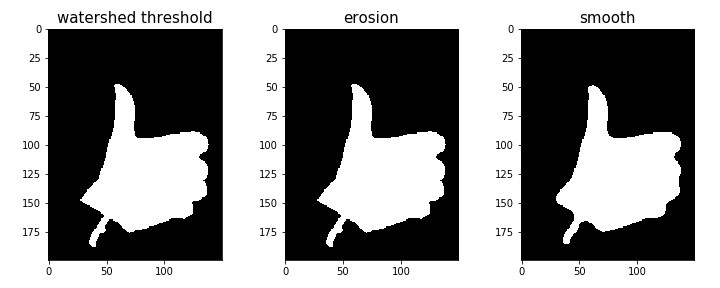
From this simple black and white shape we can create a skeleton, which is a 1 pixel wide representation of the image.
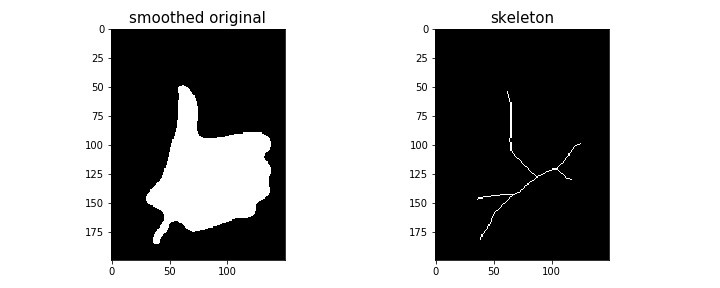
From this we find the top left most tip of the skeleton as the tip of the thumb (red circle) and then traverse the line until we fount the first large bend (green circle), which represents the first joint. We also need to identify the baseline of the thumb (blue line). From this we can calculate the angle between the red-green vector and blue line.
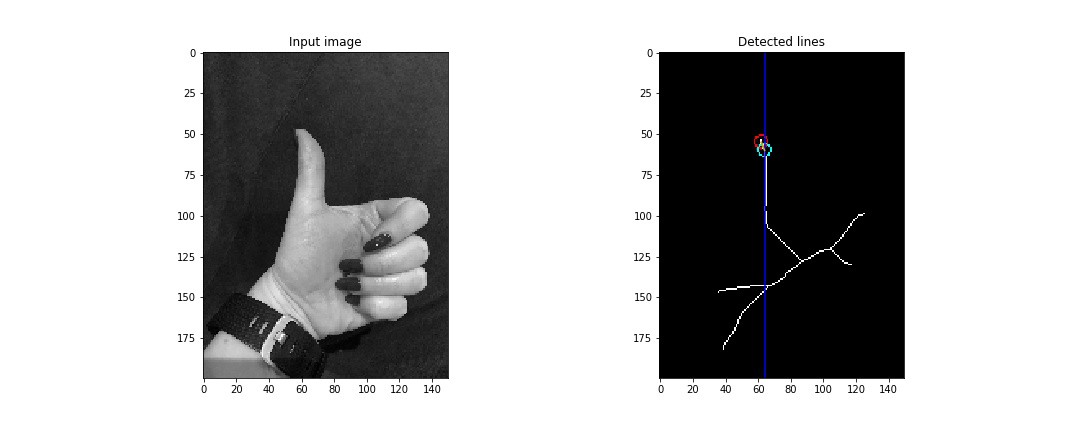
We return an image to the user that shows the seed area for the thresholding (magenta circle) as well as the resulting thresholding area (light blue). This also contains the points and vector for the thumb, as well as the baseline.
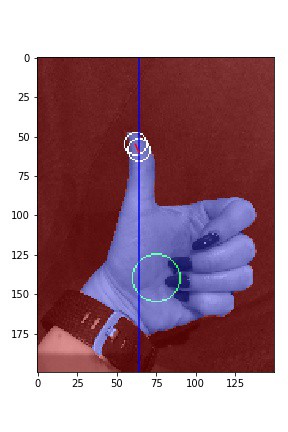
Serverless web service
We chose a serverless operational model as we want the service to scale to potentially thousands of simultaneous users (during a presentation) while not having to pay anything if there is no activity on the page.
The user submits an image to the API gateway which triggers a lambda function to process the image and calculate the angle. This function deposits the resulting image on S3 and populates the dynamoDB table. It returns the angle, percentile, and s3 bucket url back to the user.
During presentations a webpage polls the dynamoDB table in realtime to find the top three most bent thumb as well as display the submission statistics (how many images uploaded and the distribution of the angles so far).
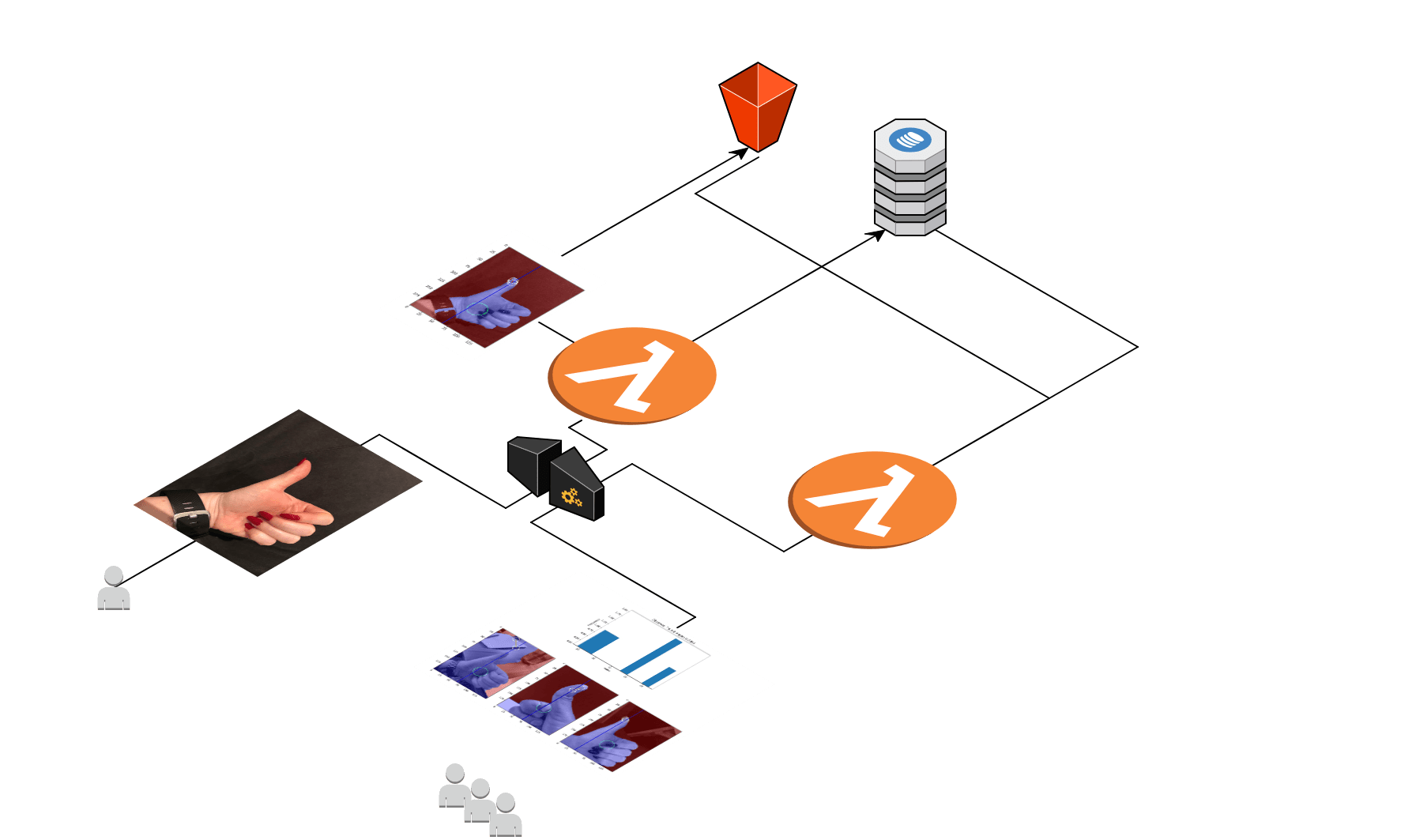 Architecture of Hitchhiker?s Thumb Angle Calculator
Architecture of Hitchhiker?s Thumb Angle Calculator
Take home message
Genomics hold the blueprint for our body, it therefore not only affects the way we look but also our future disease risk. Becoming more savvy in understanding the relationship between the genome and us will be important for health literacy going forward. The Hitchhiker?s Thumb Angle Calculator is a fun way to engage in this topic.
